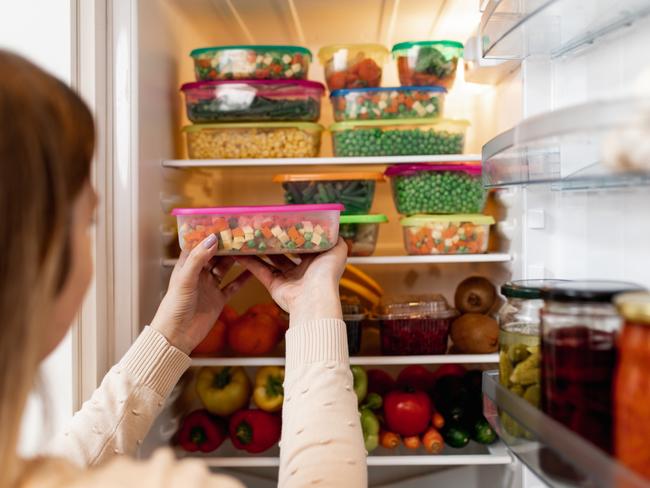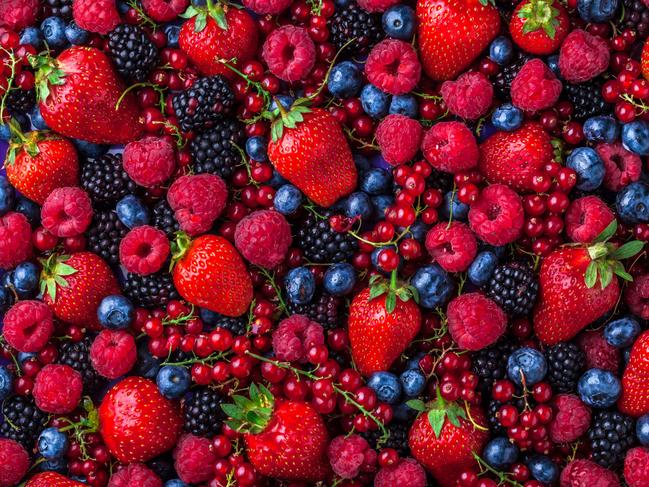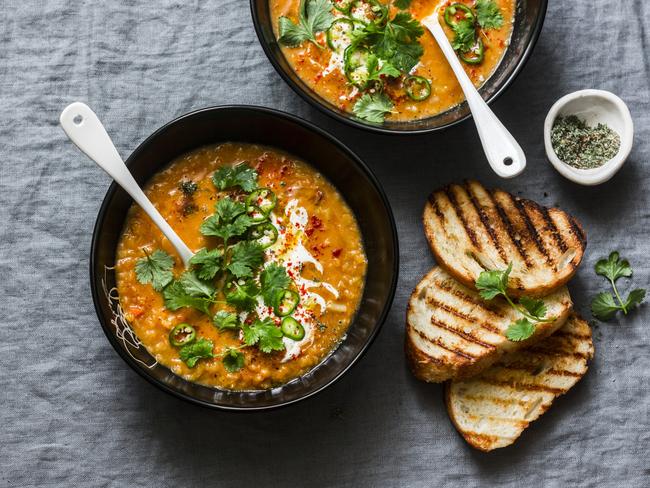Food freezing mega guide: What you must know
Mastering the art of organising your freezer will save you time, money, and minimise wastage of good, fresh food. Here are the safest and most effective ways to do it.
Hibernation
Don't miss out on the headlines from Hibernation. Followed categories will be added to My News.
Freezing is a great way to preserve food for a long period of time, and that’s all thanks to some simple science. As the temperature of the food drops below freezing point, the water in its cells turns into ice crystals. The optimum temperature for freezing most foods is between -15°C and -18°C, because this is the temperature at which food-poisoning bacteria stops growing. In other words, freezing doesn’t kill bacteria but stops it from growing rapidly and prevents food poisoning.
You can turn your freezer into a mini pantry by freezing raw foods, such as meats, vegies, and cakes and muffins. Freezing homemade meals is also a great way of making sure you have delicious, nutritious food on hand whenever you need it.

In this comprehensive guide you’ll find out how to make the most of your freezer. By mastering the art of organising your freezer, you’ll save time and money, and minimise wastage of good, fresh food.
WHAT YOU NEED
The following items are useful for storing and labelling frozen foods:
●Foil and plastic wrap are handy for wrapping frozen foods such as cakes, muffins, quiches and tarts.
●Freezer paper, such as Glad Go-Between, is great for placing between pancakes, fritters and raw meats.
●Sealable freezer bags are good to have on hand for freezing muffins, fritters, pancakes and vegetables.
●Plastic airtight, freezerproof containers for freezing liquid-based dishes, such as soups and casseroles.
●Freezerproof, ovenproof dishes are needed for when you’re cooking and freezing bakes.
●Labels help make all frozen food clearly identifiable.
●Permanent freezer markers are useful for labelling foods with the food name and use-by date.
HOW TO STORE
Here’s how to store different kinds of foods safely and efficiently, so you also make the most of your freezer space.
LIQUID-BASED DISHES
Store dishes, such as soups and stocks, in airtight containers. Leave a 3cm gap at the top so the liquid can expand as it freezes.
BERRIES
Arrange, in a single layer, on a baking tray and freeze. This allows fruit to retain its shape. Once frozen, transfer to an airtight container and freeze.

FRITTERS AND PATTIES
Place, in single layers, between sheets of freezer paper in an airtight container. This makes them easy to separate.
MUFFINS, CAKES & SLICES
Wrap muffins and individual slices of cake in a double layer of plastic wrap, then in foil. Store together in a sealable plastic bag.
PUREES
Freeze purees, and even concentrated stocks, in ice cube trays, so you don’t have to thaw the whole lot when only smaller quantities are needed.
MINCE
Place in a sealable plastic bag and press to flatten. This allows the mince to thaw more evenly than when it’s frozen in a ball shape.

PASTA BAKES
Cook pasta bakes in freezerproof, ovenproof dishes. Cool. Cover with a double layer of plastic wrap, then in foil and freeze.
NUTS
Place in airtight containers or sealable plastic bags and store in the freezer. Nuts contain a lot of oil and can become rancid if stored in the pantry.
ICE-CREAM
Cover the surface of the ice-cream with plastic wrap, replace the lid and freeze. This prevents freezer burn.
CREPES & PANCAKES
Layer each one between sheets of freezer paper, so they don’t stick together when thawed. Store in sealable plastic bags.
PACKAGED MEAT
Remove meat, such as steaks, sausages, chops and fillets, from the supermarket packaging. The supermarket wrapping is designed to allow oxygen in to keep the colour of the meat bright and, while this is fine for refrigerated storage, it leads to freezer burn in the freezer. Instead, wrap portions separately in a double layer of plastic wrap, or layer them between sheets of freezer paper, and store in an airtight container. This makes single portions easy to separate.
WHAT NOT TO FREEZE
Some foods just don’t freeze well. Follow this list to find out what foods you should avoid freezing.
Vegetables with a high water content (such as cucumber, celery and lettuce) should not be frozen because the water expands during freezing and damages the structure of the cells. This makes them mushy when thawed.
Jam turns runny and watery when frozen and thawed. This is because freezing causes the sugar to break down.
Dairy products (such as milk, yoghurt and cream) should not be frozen because they curdle when thawed.
Egg-based sauces separate and whole egg shells crack when frozen. Raw egg whites, however, can be frozen in sealable airtight containers and thawed for use in recipes.
Foods with stuffings, such as whole chickens, should not be frozen as raw meat juices can be absorbed by the stuffing and cause bacteria to grow.
DID YOU KNOW…
You can refreeze some foods that have been frozen and thawed? However, refrozen food doesn’t have the same freezer-life as food that hasn’t been previously frozen and thawed, so it’s best to use it within a week of refreezing. The process of refreezing raw foods and cooked meals differs.
Here’s a quick guide:
●Refreeze raw foods (such as poultry and meat) as long as they have not been thawed in the fridge for longer than 48 hours. Don’t refreeze raw food that has been taken out of the fridge or has reached more than 5°C. Discard any raw foods with unpleasant odours.
●Refreeze cooked foods (such as soups, casseroles and pasta bakes) as soon as they have cooled down after being reheated. If food has been left at room temperature for more than one or two hours, do not refreeze it.
Used well, a freezer can be a cook’s best friend, as useful as your oven and cooktop. Learn all the tricks and tips you need to know about freezing almost anything with part one of this easy guide.
